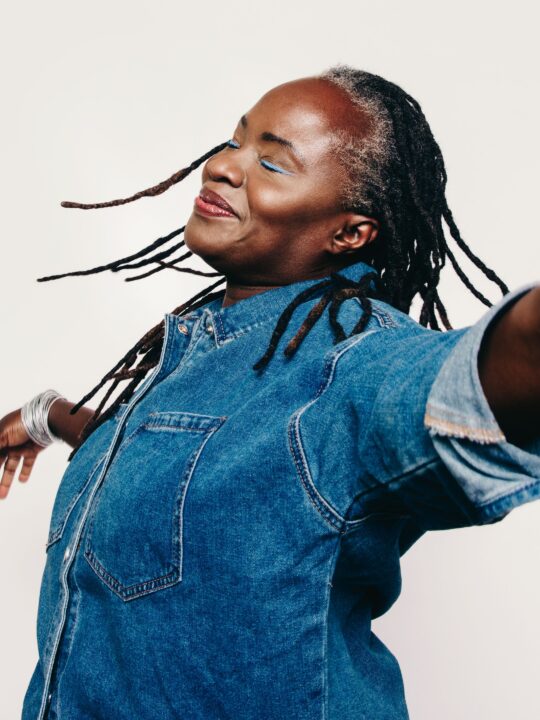The menopause is finally getting the attention it deserves. Are brands ready to engage?

Menopause awareness is nothing new. It’s been steadily growing in the background for some time, and we are now starting to see it breaking more into the mainstream. However, just how significant this next stage of awareness and development is set to be is mostly unknown to the brands it will affect the most. Understand it early, and they’ll thrive.
At any one time, around 55% of adult women are going through some stage of the menopause (including perimenopause and post menopause). However, despite this huge demographic of women, what we see is a majorly overlooked opportunity for brands and retailers in the UK. The numbers show a lack of general awareness, and if brands are able to position themselves as a friendly, reliable resource within this market, they will be able to unlock huge potential.
Awareness has increased in recent years thanks to positive ambassadors like Davina McCall, Gabby Logan and Gwyneth Paltrow, but knowledge is still lacking. According to Trinity McQueen research 1 in 3 UK women say they know nothing or very little about the topic. This figure is even higher when asked about perimenopause and post-menopause, with 50% and 45%, respectively, saying they know nothing or very little about it. The stages that come before and after the menopause itself can span many years.
Understanding of the specific symptoms experienced during menopause is also very limited. Yes, women are aware of the more obvious hot flushes, mood swings and tiredness but more education on the less well-known symptoms is needed to help women navigate this phase of their lives. Very few women recognise adult acne (17%) and heart palpitations (26%) as definitely being symptoms of menopause, for example.
These gaps in knowledge and understanding mean that there is ample room for brands to become the ‘friendly face’ of menopause. The ones that help to explain and demystify the menopause, in a way that is at once digestible, fun and engaging, whilst providing simple/off-the-shelf solutions will be able to really own this space and ultimately be the most successful.
So how do you do it? We know women are comfortable talking about menopause with other friends (70%), other women (56% with their mothers), as well as with health professionals (77% with their GP, 65% with a pharmacist and 64% with menopause specific organisations). But many are also open to learning about menopause from retailers (49% from health & wellness stores (e.g., Holland & Barrett, Planet Organic Whole Foods etc.) and 42% from beauty stores/drugstores and 26% from supermarkets).
So could partnerships with friendly, female healthcare experts help those establishments build credibility? The preferred channel for absorbing knowledge is online (58%). Older women (those 55+) are interested in learning more from the news (71%), whilst younger women (18-34) show a preference for social media (39%). There’s room for a more personal touch too, with 29% of women who would like learning to take place in person (i.e. in store). In short, the channels by which women take advice and knowledge range greatly by demographic, so brands need to be attentive and malleable in their approach, in order to reach all the different groups of affected women.
Ultimately, it’s about matching the need to the product/service – the majority of women are after menopause-related products/services that inspire them to embrace their changing bodies and identities (51%), whether that be sleep products like pillow sprays to skin moisturisers. They also want to see products that promote overall health and wellness (51%) and educate both women (46%) and men (43%). Taking a holistic approach (i.e., addressing not just the physical symptoms but also emotional and psychological wellbeing) and being easy to use are also of high importance (42% and 40% respectively).
So what’s the overarching lesson we can take from these numbers? The first thing to understand is that menopause awareness, whilst previously having some mainstream presence, is on the verge of a mainstream explosion. With celebrities and organisations like Gen-M spearheading a push towards the normalisation of the topic, the menopause is heading for its long overdue time in the spotlight.
However, just a simple awareness of the menopause’s existence will not be what drives opportunity for brands. The menopause, including peri and post, spans 20 years, travelling through a journey of 49 confirmed symptoms that vary from person to person. If brands can tap into this and position themselves as a true companion to those affected, the product and service opportunities are endless. Brands that understand the multi-faceted, wide-spanning nature of this opportunity early on will be able to thrive in it. With a mixture of product focus, educational value and emotional support, brands will be able to provide much needed clarity and confidence for this huge demographic, and become the brand of choice.
For access to the full scope of sector insight, get in touch with Trinity McQueen today.
Sources of data:
Self-sponsored study conducted by Trinity McQueen between 15-22 May 2023 among a nationally representative sample of 1,003 UK adults
ONS Census 2021: Sex by age dataset (data for England and Wales)
NISRA Census 2021: Mid 2021 Population estimates: Age bands and sex
National Records of Scotland: Mid-2021 Population Estimates Scotland

 Back to articles
Back to articles

